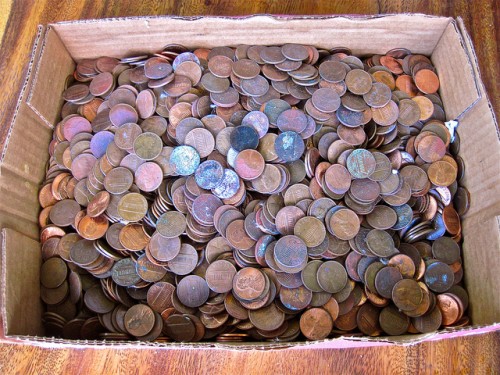
The US one cent piece, or the penny as it’s more commonly known, is due to be dropped from circulation in the year 2020. This marks the end of many years of debate within the United States government over whether to continue to use the coin. Consumers and merchants alike have rallied on both sides of the issue – after all, the penny has been a staple part of currency exchange since its introduction in 1787. It was created by our Country’s founding fathers, specifically Franklin and Jefferson, to help establish a stable currency for the Republic.
So, why eliminate this 200-year old icon when there are still so many things you can do with the penny? In the final analysis, the reasons not to continue to mint it outnumber those to keep it in production. Consider the rationale below and perhaps the decision will make sense.
You Can’t Buy Anything for a Penny
For a century or so after its origin, the one-cent piece carried significant value. Believe it or not, there used to be such a thing as “3 for a penny”. Penny candy was common until sugar rationing during WWII drove prices up. In today’s marketplace, you’d have to do an exhaustive search to find anything with a one-cent price tag and you’d probably be disappointed. So-called one cent sales are more conceptual than factual and based on “Buy one, get the second one for a penny”. Gone are the days when a child could lay a penny on the counter and pick out treats until it was spent.
Minting Pennies Costs Taxpayers Money
Note that I didn’t use the old standby: “It costs more to manufacture than it’s worth.” While that statement is true (it costs more than 1.7 cents to make one), coins are recirculated in spending, so any coin is likely to be used thousands of times over. That makes the manufacturing cost a moot point. However, as the value of a penny has decreased over the years, so has its circulation. If the coin isn’t being used in the US economy, it makes sense to save government and taxpayer dollars by eliminating the cost of producing it.
Plastic Is Replacing Copper (and Silver, and Paper)
Watch a checkout line today and you’ll see more people reach for their debit cards than for actual currency. It’s faster, easier to track and less messy. It also costs less for the merchant to pay the fees to process a card transaction than the man-hours required to handle cash in the store and carry cash deposits to the bank. So, along with other hard currency, swapping pennies over the counter is inefficient.
Pennies Are Already Dropping out of Circulation
By the same token as the points above, one cent coins are quickly becoming stockpiled in banks and in the homes of consumers, simply because they’re no longer useful. Most people would rather hand a store clerk only bills for a purchase, rather than count out change. That means the clerk is going to hand you more pennies as change. This cycle repeats itself and pennies simply build up. Check your piggy bank. What’s the most common coin in it?
Eliminating One-Cent Increments Encourages More Realistic Pricing
While it’s hard to pinpoint exactly when retail prices went from amounts like $250.00 to $249.99, it’s not difficult to understand that it’s a gimmick. Obviously, the $249.99 price is better, right? Sure, but if you save one penny on a transaction each day for a year, you’ve gained a whopping $3.65. Taking the penny out of the economic picture will result in a little more honest approach to retail pricing.
It Will Increase in Value
Historically, dropping any minted coin out of circulation immediately increases its value as a collectible. So, in 2020, all those pennies laying around the house will be worth more, and will continue to gain value as time passes. Many collectors are already starting to hoard pennies, taking more out of circulation.
We’ll Conserve Natural Resources
We’re more aware today than ever that the minerals we mine aren’t going to last forever. Ceasing production of pennies will lower our consumption of copper and zinc, as well as the fuel and energy required to mine and process it.
Nobody Misses the Halfpenny
These days, very few individuals realize that the US once had a half-cent coin. That’s because it was taken out of circulation in 1857. Given that phasing out this denomination had virtually no impact on commerce, there’s no reason to think that dropping the penny will have any serious side effects.
Other Countries Have Successfully Done without Theirs
Many other countries have eliminated several small denominations from their currency with no major impact on commerce. New Zealand, for instance, dropped their one and two-cent coins over 20 years ago. They have, since then, eliminated their nickel as well.
It Could be a First Step toward a “Cashless” Commerce System
Individuals with great foresight have long predicted that future societies would discontinue the use of currency altogether. Money would be replaced with a system of credits, thus eliminating any need for an exchange medium. Students of this concept support the idea as a valid way to establish fair trade.
In the final analysis, the penny has served the US faithfully for more than 200 years, but today it has outlived it usefulness. It makes sense to retire it with dignity and collect it for posterity and no longer have to face the dilemma, “Is it worth picking up a penny from the ground?“.
(Photo courtesy of puuikibeach)
Comments